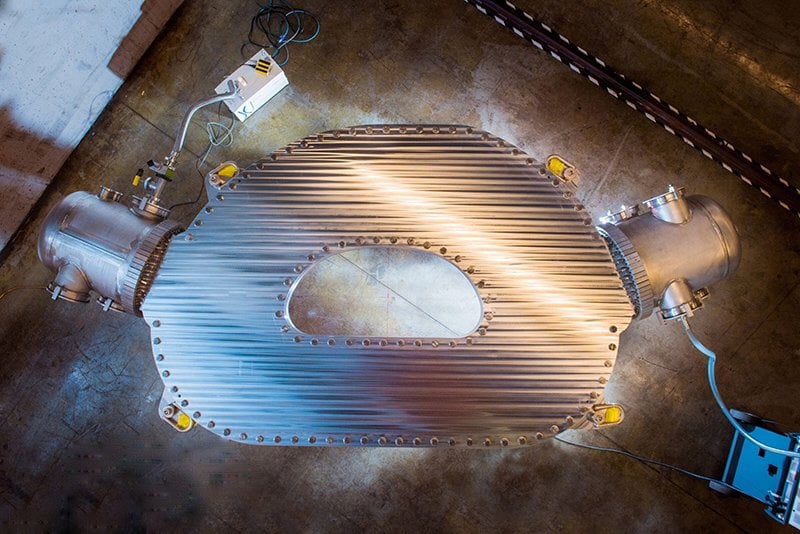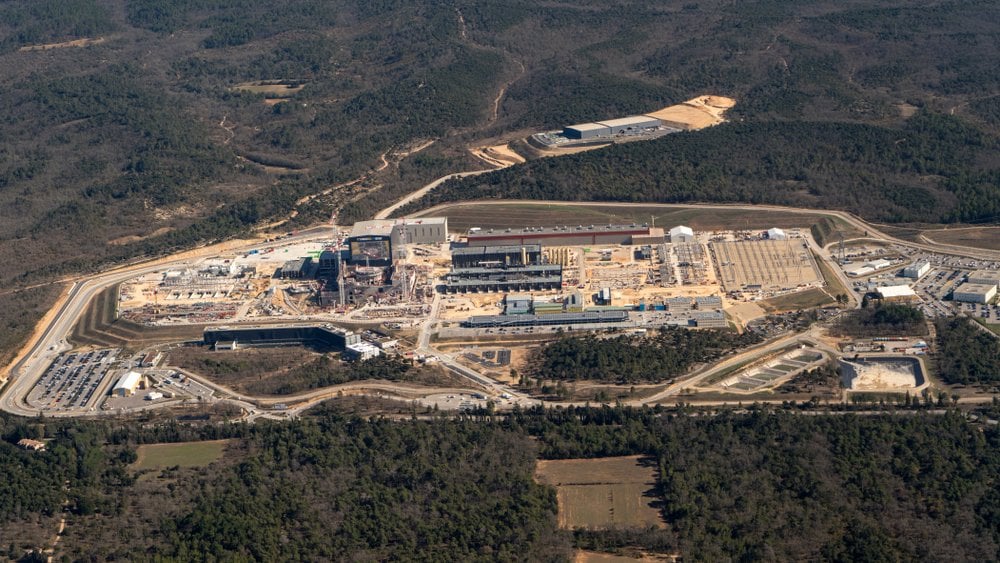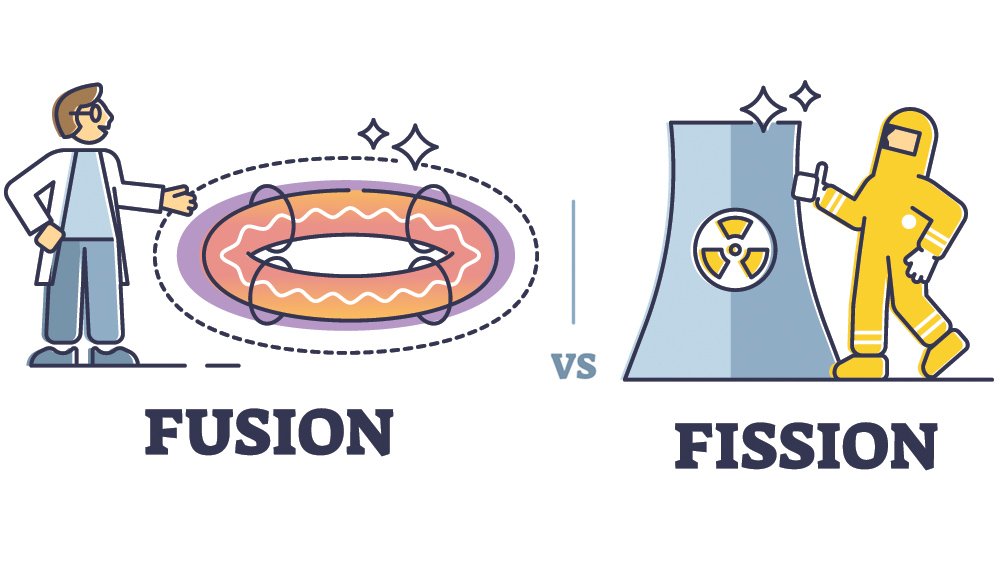It was a good week for progress towards reducing global heating. The good news about the fusion technology breakthrough is highly meaningful, even if it takes a while to prove out. But it will take a lot less of a while than you may have thought, based on the overly-cautious articles everywhere.
The fusion news, well explained here by the New York Times’ Kenneth Chang, was that a U.S. government research project at Lawrence Livermore Laboratories in California for the first time ever generated more energy using nuclear fusion than went into the reaction itself. This is exciting because nuclear fusion, if it can be made to work, is as close to a “silver bullet” for global heating as could be found. It uses inexpensive and widely-available fuel, emits no harmful climate gasses, and generates no longterm radioactive waste, as does traditional nuclear power, which uses fission. But most reports incorrectly, in my view, downplayed the likelihood fusion could be a near-term help in our grim battle against a rapidly-warming earth.

Livermore scientists made cautious statements around the recent announcements, like here where lab director Kimberly Boudil said commercial-scale fusion systems could be operating in “several decades.”
But the Livermore facility is old and uses an outdated laser design. It also happens to be the world’s most powerful laser, because it benefitted from vast U.S. government largesse, costing $3.5 billion to build starting in 1997. The ample money was there because it was designed to assist in maintaining nuclear weapons. There is plenty of government money for weapons. The just-passed 2023 U.S. defense budget totals $858 billion! If we spent anything like that annually to combat global heating, we would certainly triumph against its worst effects.
Many commentators contrasted fusion, which involves pushing atoms together to generate energy, with fission, which means breaking atoms apart, and asserted a contrast between potential green energy and nuclear weapons. But that is a serious oversimplification. The reason Livermore got all that money for a fusion laser system is because modern “hydrogen bombs,” or so-called thermonuclear weapons, use both fission and fusion to cause vast explosions. The fission sets off fusion, which radically increases a bomb’s destructive power. Fusion reactors for green energy alone, however, generally pose no risk of explosion.
Livermore studies fusion in order to study nuclear weapons. That fusion’s potential as an energy source could be imputed from the operation of its machines is essentially an afterthought.
So a government nuclear weapons-related system, powerful though it is, will not likely be our best demonstration of fusion’s potential. Much better and cheaper purpose-built systems are now being built. So it’s possible to be more optimistic about prospects for fusion than most articles suggested.

There is a gigantic, growing, global ecosystem of startups and government projects devoted to creating modern fusion systems for green power. One expert recently told us there are 32 fusion startups worldwide. At our recent Techonomy 2022 conference, former-Meta CTO-turned-climate-investor Mike Schroepfer raved about his investment, Commonwealth Fusion Systems, an MIT-spinoff based in Massachusetts which has raised more money for fusion than any other private effort–$2 billion since 2017, according to Crunchbase.

Eager and informed aggressive entrepreneurs like Schroepfer are convinced we are on the threshold of a new era of “hyperscaling” climate-related physical systems. We’re going to be able to build super-complex physical installations much faster than we ever before could, because the stunning and scary pace of global heating means we have to. And because software, AI, and even probably quantum computers will help speed the design, planning, and implementation for such systems and the manufacturing infrastructure needed to build them. And this will likely apply to fusion, perhaps most of all. Commonwealth’s website targets commercial systems to begin sending energy into the grid in 2025! Optimistic entrepreneurs are refreshing. That date is unlikely. But in any case such ambitions, which are widespread in the fusion startup community, raise doubts about a “several decades” attitude. Commonwealth uses the more widely-popular magnetic containment method for generating and containing a fusion reaction, instead of lasers like those used at Livermore. Like several other startups, it has its own super-powerful “Tokamak” magnet architecture. (Fusion reactions generate heat comparable to that of the sun, but are suspended in space by a magnetic field in part to prevent them burning up whatever equipment they are near.) Commonwealth has won 15 awards from the U.S. Department of Energy and is in multiple joint development projects with it and other national governments.
And there are other sophisticated commercial efforts. There’s TAE Technologies, a California-based fusion startup which has raised $1.2 billion over its many-year history, including $250 million this year from investors including Google, Chevron, and Sumitomo. Then there’s Helion Energy, near Seattle, which has raised $577 million. Also in Seattle is Zap Energy, one of whose leaders spoke at Techonomy Climate last March. It has what Zap says is a cheaper yet promising way to create and maintain a fusion-engendering magnetic field, based on technology created by scientists from the University of Washington. It has raised $203 million.
Whatever turns out to work best with fusion will be scaled up very quickly and put on the grid in as many countries as possible. In this crisis, past deployment timelines no longer offer a reasonable framework for prediction. That’s one reason investors in the many startups think it’s a good investment.
Governments too are working on energy-only fusion experiments. Most notable is the International Thermonuclear Experimental Reactor, or ITER, in southern France. Promisingly, it is a joint effort, funded by China, the European Union, India, Japan, Russia, South Korea, and the U.S. But in perhaps another sign that we shouldn’t only rely on governments for progress, the project is way past its original timeline, and its cost has risen from an estimated 10 billion Euros to several times that. It was meant to start operating in 2018 and is now hoped to begin in 2025.

Developing and deploying fusion energy is a hugely ambitious global project so we should all hope for the best. And ITER’s collaborative nature means its fruits will be widely shared, which is also great.
But with all due respect and honor to the successful scientists at Lawrence Livermore, I expect good news in coming years to flow more widely from the private sector.
Caveat: Prospective progress in fusion is no panacea. We still are in an existential battle and all our weapons must be deployed. We have to continue absolutely everything in all realms right away to reduce current emissions and figure out ways of removing greenhouse gasses already released.
















